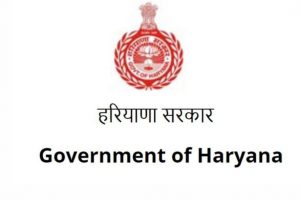Today Current Affairs: 9th November 2021 for UPSC IAS exams, State PSC exams, SSC CGL, State SSC, RRB, Railways, Banking Exam & IBPS, etc
Table of Contents
12-Foot Statue Of Adi Shankaracharya:

A 12-foot statue of Adi Shankaracharya has been unveiled at Kedarnath, where the acharya is believed to have attained samadhi at the age of 32 in the ninth century.
Adi Shankaracharya:
- Born in Kaladi village on the bank of the Periyar, the largest river in
- He was a disciple of the scholar
- He was constantly on the move — bearing the flag of Advaita Vedanta, challenging prevailing philosophical traditions including Buddhism and Jainism.
- He is believed to have established the ritual practices at the Badri and Kedar dhams.
- Adi Shankara is generally identified as the author of 116 works — among them the celebrated commentaries (bhashyas) on 10 Upanishads, the Brahmasutra and the Gita, and poetic works including Vivekachudamani, Maneesha Panchakam, and Saundaryalahiri.
- He also composed texts like Shankarasmrithi, which seeks to establish the social supremacy of Nambuthiri Brahmins.
- Advaita Vedanta articulates a philosophical position of radical nondualism, a revisionary worldview which it derives from the ancient Upanishadic texts.
- According to Advaita Vedantins, the Upanishads reveal a fundamental principle of nonduality termed ‘brahman’, which is the reality of all things.
- Advaitins understand brahman as transcending individuality and empirical plurality.
- They seek to establish that the essential core of one’s self (atman) is brahman. The fundamental thrust of Advaita Vedanta is that the atman is pure non-intentional consciousness.
- It is one without a second, nondual, infinite existence, and numerically identical with brahman.
National Education Policy: Not Be Implemented In Tamil Nadu

Chief Minister M K Stalin has said the National Education Policy (NEP) 2020 will not be implemented in Tamil Nadu. An expert committee would be formed soon to prepare a new education policy of the state.
- Tamil Nadu’s arguments: NEP being recommended by the Centre was “for elites” and the education “will be confined and limited to a few sections”.
- Besides the opposition to three-language policy, the state has also questioned the prominence given to Sanskrit over and above Tamil and other languages.
- Above all, NEP intrudes into a crucial domain of the state – education.
- Therefore, NEP is being viewed as a policy against social justice, federalism, pluralism and equality.
Global Methane Pledge:

The Global Methane Pledge was launched at the UN COP26 climate conference in Glasgow.
- It is an effort led jointly by the United States and the European Union.
- So far, over 90 countries have signed this pledge.
About the Global Methane Pledge:
- The pledge was first announced in September by the US and EU, and is essentially an agreement to reduce global methane emissions.
- One of the central aims of this agreement is to cut down methane emissions by up to 30 per cent from 2020 levels by the year 2030.
- According to the International Energy Agency (IEA), while methane has a much shorter atmospheric lifetime (12 years as compared to centuries for CO2), it is a much more potent greenhouse gas simply because it absorbs more energy while it is in the atmosphere.
- In its factsheet on methane, the UN notes that methane is a powerful pollutant and has a global warming potential that is 80 times greater than carbon dioxide, about 20 years after it has been released into the atmosphere.
- Significantly, the average methane leak rate of 2.3 per cent “erodes much of the climate advantage gas has over coal”.
- The IEA has also said that more than 75 per cent of methane emissions can be mitigated with the technology that exists today, and that up to 40 per cent of this can be done at no additional costs.
Unlawful Activities (Prevention) Act (UAPA):

The Editors Guild of India (EGI) has expressed shock over the Tripura police’s action of booking 102 people, including journalists, under Unlawful Activities (Prevention) Act. This was for reporting and writing on the recent communal violence in the State.
About the Unlawful Activities (Prevention) Act:
- Passed in 1967, the law aims at effective prevention of unlawful activities associations in India.
- The Act assigns absolute power to the central government, by way of which if the Centre deems an activity as unlawful then it may, by way of an Official Gazette, declare it so.
- It has death penalty and life imprisonment as highest punishments.
- Under UAPA, both Indian and foreign nationals can be charged.
- It will be applicable to the offenders in the same manner, even if crime is committed on a foreign land, outside India.
- Under the UAPA, the investigating agency can file a charge sheet in maximum 180 days after the arrests and the duration can be extended further after intimating the court.
As per amendments of 2019:
- The Act empowers the Director General of National Investigation Agency (NIA) to grant approval of seizure or attachment of property when the case is investigated by the said agency.
- The Act empowers the officers of the NIA, of the rank of Inspector or above, to investigate cases of terrorism in addition to those conducted by the DSP or ACP or above rank officer in the state.
- It also included the provision of designating an individual as a terrorist.
- In June 2021, delivering a judgment defining the contours of the otherwise “vague” Section 15 of the Unlawful Activities (Prevention) Act, 1967, (UAPA), the Delhi High Court laid down some important principles upon the imposition of Section 15, 17 & 18 of the Act.
Oil And Food Prices:

Last week, the UN Food and Agriculture Organisation released data showing its world Food Price Index (FPI) averaging 133.2 points in October, the highest since July 2011.
- No less significant, though, is the way the FPI has oscillated since the outbreak of Covid-19.
- In May 2020, when the global economy was in the doldrums, it had collapsed to a four-year low of 91.1 points. From there to a ten-and-a-quarter-year-high now has been quite a climb.
- Much of this roller-coaster has had to do with oil.
- One reason why petroleum and agri-commodity prices move in tandem is the bio-fuels link.
- When crude prices rise, blending ethanol from sugarcane and corn (maize) with petrol or diverting palm and soyabean oil for biodiesel production becomes that much more attractive.
- Cotton, likewise, turns relatively affordable vis-à-vis petrochemicals-based synthetic fibres.
- Also, since corn is primarily an animal feed, its diversion to ethanol leads to substitution by other grains, including wheat, for livestock use. That, then, pushes up prices of foodgrains as well.
- The same happens to sugar, as mills step up the proportion of cane crushed for fermenting into alcohol.
Haryana State Employment Of Local Candidates Act, 2020:

The Haryana Government has said that the Employment of Local Candidates Act, 2020 will be implemented in the state from 15th January 2022.
- It requires firms with 10 or more employees to reserve 75% of all jobs offering a salary of less than Rs. 30,000 a month for eligible candidates of State domicile.
- Jobs will be provided in various companies, societies, trusts, and limited liability partnership firms situated in the state.
- The move is aimed at disallowing the influx of talent from other parts of the country even in sectors like IT and IT-enabled services (ITes), which the State does not have enough captive supply of.
- The law will be applicable for a period of 10 years.
- The state government also relaxed the residency (domicile) requirement from 15 to 5 years for a person to get a bona fide resident certificate in the state to provide some flexibility to the private companies in hiring.
- It will be mandatory for all these employers to register all their employees drawing gross monthly salary or wages not more than Rs 30,000 on the designated portal available on the official website of the Labour Department, Haryana.
- Violation of any provision of this Act will be a punishable offence.
Mass Extinction:

Before the Cretaceous mass extinction known for wiping out non-avian dinosaurs, the Earth had witnessed four other great mass extinctions.
- A paper published last week in the journal, Nature Geoscience, has come up with a new reason behind the first mass extinction, also known as the Late Ordovician mass extinction.
- The article notes that the cooling climate likely changed the ocean circulation pattern.
- This caused a disruption in the flow of oxygen-rich water from the shallow seas to deeper oceans, leading to a mass extinction of marine creatures.
- The Ordovician mass extinction that occurred about 445 million years ago killed about 85% of all species.
- The other big extinction events were:
- The Devonian mass extinction (about 375 million years ago) wiped out about 75% of the world’s species.
- The Permian mass extinction(about 250 million years ago) also known as the Great Dying caused the extinction of over 95% of all species.
- The Triassic mass extinction (200 million years ago) eliminated about 80% of Earth’s species, including some dinosaurs.
- Some researchers have pointed out that we are currently experiencing a sixth mass extinction as the result of human-induced climate change.
Logos Of Darjeeling Toy Train As Intellectual Property:

India has finally registered the logos (two) of the iconic ‘Toy Train’ internationally as its intellectual property.
- The claim for registration was sent to the World Intellectual Property Organisation (WIPO) with the procedure laid down in WIPO’s Vienna Classification (VCL).
- There is a six-month window to register any counter-claims, following which the Indian government’s claim will receive international approval.
- The use of these logos anywhere in the world will now require written permission from India and the payment of a fee.
- The DHR has two logos, both of which have been patented.
- The process of registering the logo with the Controller General of Patents, Designs and Trademarks under the Union Ministry of Commerce and Industry was initiated in August 2021. It was then sent to the WIPO.
- Both logos are over a century old, and popular in world heritage circuits.
- They are used randomly on merchandise and communications materials by various commercial organisations in Europe, the UK and the US; even the West Bengal government has used it in communications and on merchandise in the past.
- This will put the Darjeeling Toy Train’s ‘Iron Sherpa’ blue steam locomotives on the same pedestal as the legendary transalpine Rhaetian Railway in Switzerland, and is likely to boost its recognition and prominence around the world.
DHR:
- DHR was built in the British era between 1879 and 1881.
- It is located in the foothills of the Himalayas in West Bengal.
- It is the most outstanding example of a hill passenger railway. Its design applies bold and ingenious engineering solutions to the problem of establishing an effective rail link across a mountainous terrain of great beauty.
- It was declared a UNESCO (United Nations Educational, Scientific and Cultural Organization) World Heritage Site in 1999.
Galaxy Messier 87 (M87):

Scientists studying the galaxy Messier 87 (M87) – which surrounds the only black hole to have been imaged so far – have come up with a theoretical model of the jets of material emanating from M87.
- The calculated images published in Nature Astronomy resemble closely what is observed, and help confirm Einstein’s theory of relativity.
- Messier 87 (also known as Virgo A or NGC 4486, generally abbreviated to M87) is a supergiant elliptical galaxy with several trillion stars in the constellation Virgo.
- One of the most massive galaxies in the local universe, it has a large population of globular clusters—about 15,000 compared with the 150–200 orbiting the Milky Way and a jet of energetic plasma that originates at the core and extends at least 1,500 parsecs (4,900 light-years), traveling at a relativistic speed.
- It is one of the brightest radio sources in the sky and a popular target for both amateur and professional astronomers.
Kaho: Arunachal Pradesh

Arunachal Pradesh is planning to make a documentary about one of its most “patriotic destinations” — Kaho, a village in Anjaw district on the China border — to mark the 75th year of Independence.
- One of seven villages in the Kibithoo block bisected by the Lohit river, Kaho had weathered the Chinese attack in 1962.
- Its people had assisted the Indian soldiers who had been outnumbered.
- The village is 580 km east of Itanagar.
- Its people belong to the Meyor community.
- Anjaw is one of the 11 districts of Arunachal Pradesh that share their border with China.
- The documentary, sanctioned by the State BJP Government, is a part of the celebrations of “Azadi Ka Amrut Mahotsav”, the nationwide celebrations for the 75th year of Independence.
- According to the 2011 census, Kaho has only 65 residents and a literacy rate of 64.15%.
- Dipa village: A similar publicity event was organised at Dipa village in Lower Siang district a month ago.
- Several residents of Dipa had taken part in the freedom movement and the national flag was first hoisted at the village on August 15, 1947.
Northeast Green Summit:

Sustainable development and conservation strategies for the Northeast and its contiguous biodiversity zones, a round table of forest ministers of the region, besides green art and green music events are on the agenda of the three-day Northeast Green Summit beginning here from November 16.
- The focus area of the sixth edition of the summit is “Greening after Covid: Regional Cooperation, Innovation & Entrepreneurship”.
- It will be held at Silchar (Assam).
- Union Minister of State for Environment Ashwini Chaubey is expected to attend the summit, where delegates from Bangladesh, Bhutan and Myanmar will also brainstorm on various issues.
- It will be organised by Vibgyor NE Foundation and supported by the United Nations Environment.




